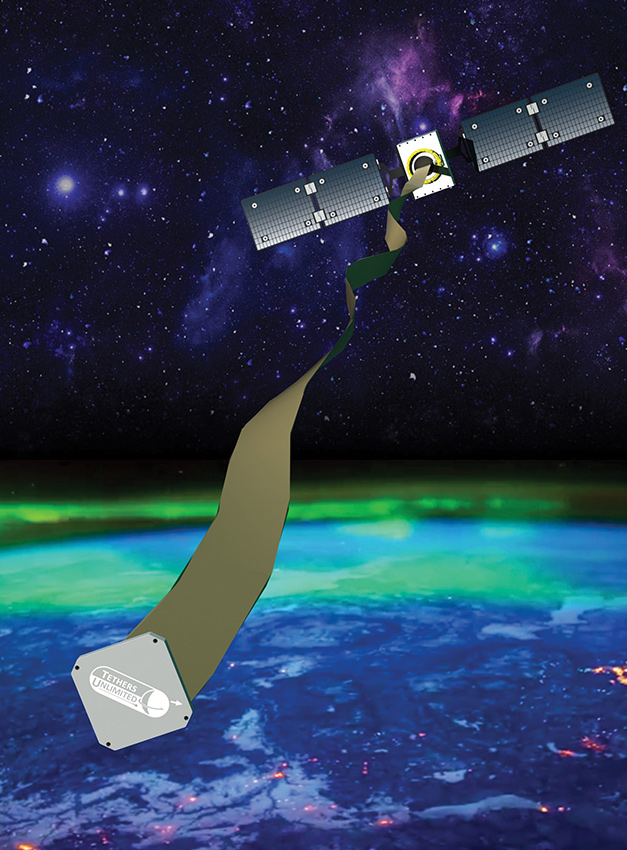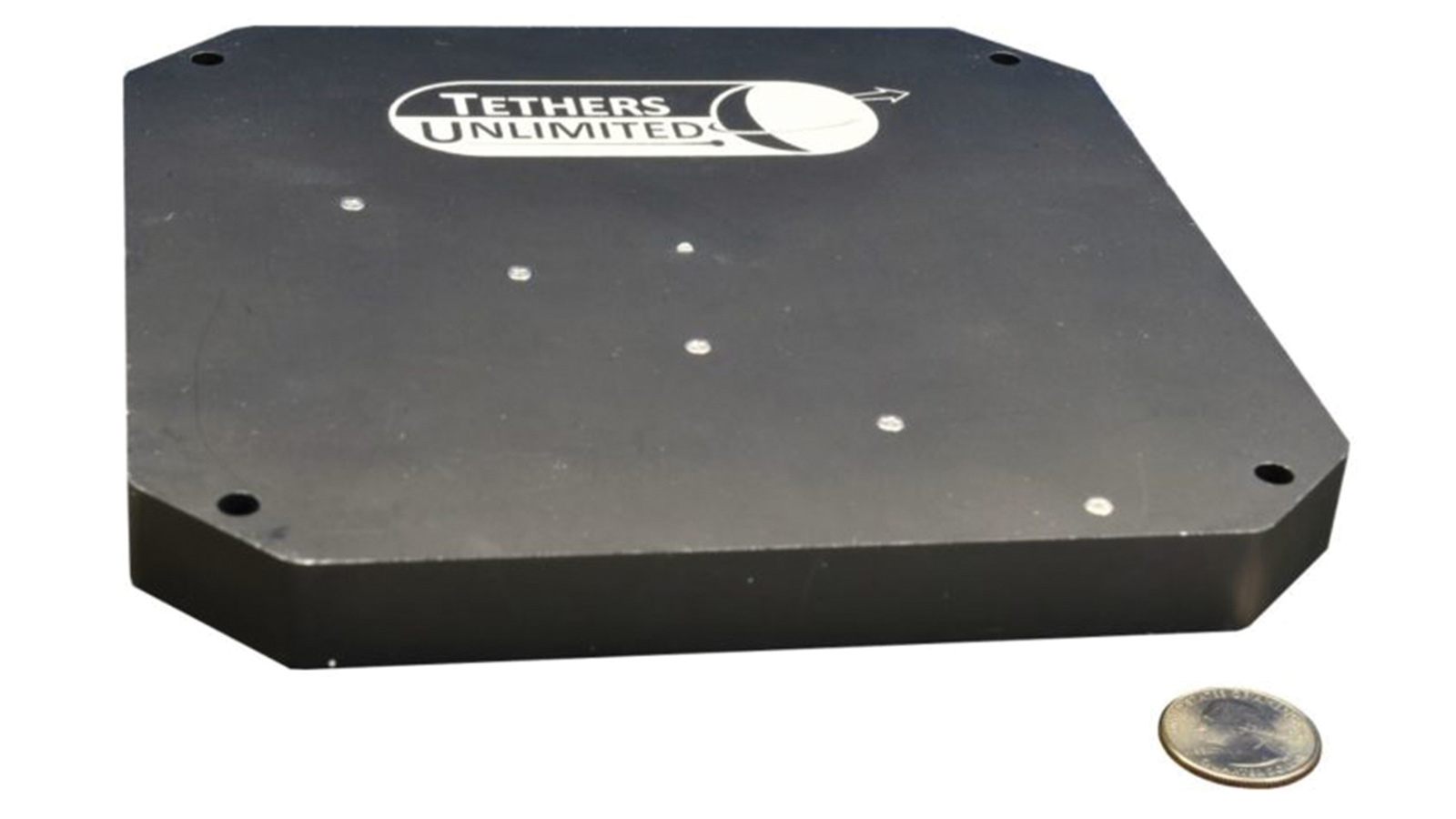Stay Up to Date
Submit your email address to receive the latest industry and Aerospace America news.
Editor’s note: This story has been updated to reflect the latest launch date for the DragRacer mission.
Few hypothetical scenarios give satellite operators greater headaches than that of their dying or defunct spacecraft colliding with another object in low-Earth orbit, creating a cloud of debris.
While some companies would like to refuel or service failing satellites or tug them out of orbit with other spacecraft, one executive is offering what he calls “the simplest, dumb-as-a-brick” solution: a 70-meter-long polymer tether that would unfurl from a dying or defunct satellite on command. The tape would conduct electricity and increase the surface area of the spacecraft in the thin veil of the atmosphere, slowing the satellite and causing it to sink and burn up sooner than it otherwise would.
Tethers Unlimited of Washington state unveiled the technology, dubbed the Terminator Tape, in 2009, and has since received a handful of orders. CEO Rob Hoyt is confident that number will soon increase, given the exponential increase of LEO satellites forecast in the coming years and the product’s low price point; a Terminator Tape module costs between $50,000 and $75,000.
“A satellite up above 700 kilometers without any kind of end-of-life deorbit solution, that satellite might be up there for several hundred or a thousand years,” he said. With a Terminator Tape, that goes down to “within 10 years.”
In a technology demonstration scheduled for launch next month, designers aim to show how the tape can deorbit a satellite in days instead of years. For the mission, called DragRacer, two twin satellites built by Boeing subsidiary Millennium Space Systems will separate in space, one equipped with the Terminator Tape while the twin acts as a control for the experiment.
Technicians at Millennium Space Systems in February bolted the notebook-sized Terminator Tape module to the side of one satellite, called Alchemy, which is scheduled to be shipped to New Zealand by the end of October together with its twin, Augury. They’ll then be launched as one unit atop a Rocket Lab Electron launch vehicle for a planned liftoff on Nov. 20.
After the satellites separate in orbit, an internal timer in the Terminator Tape module will go off, prompting the 70-meter conducting tape to unfurl. The increased surface area will increase friction that begins to slow Alchemy, while the tape interacts with the ionosphere creating an electromagnetic effect that slows the satellite further. Millennium will monitor the telemetry of both satellites via the U.S. Space Surveillance Network and radar maps from LeoLabs, awaiting Alchemy’s demise.
Millennium Space Systems estimates that Alchemy will burn up in the atmosphere within 45 days, while Augury’s orbit will slowly decay over the course of five to seven-and-a-half years.
In the future, Tethers Unlimited plans to release longer and wider versions of the tape tailored for larger satellites at much higher orbits. The nanosat version on DragRacer is designed for satellites up to 100 kilograms orbiting as high as 750 kilometers, and a version with a 20-meter tether is available for smaller spacecraft.
About cat hofacker
Cat helps guide our coverage and keeps production of the print magazine on schedule. She became associate editor in 2021 after two years as our staff reporter. Cat joined us in 2019 after covering the 2018 congressional midterm elections as an intern for USA Today.
Related Posts
Stay Up to Date
Submit your email address to receive the latest industry and Aerospace America news.





